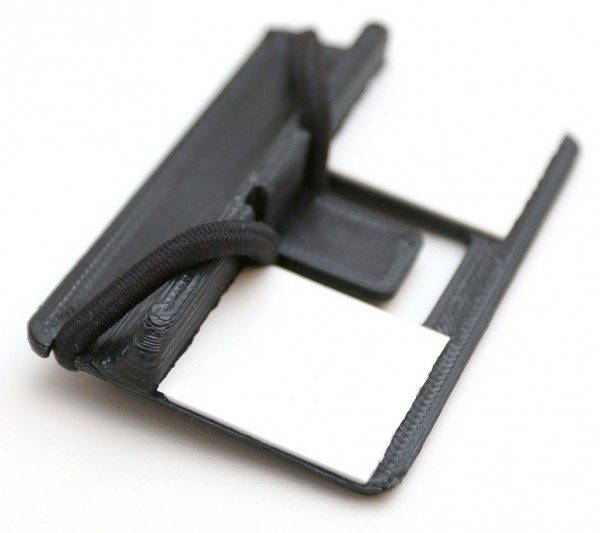 The Sidekick is a journal pen holder that is made in the USA eight at a time from starch based plastic using a homemade 3D printer. The Sidekick sticks on to most any hard covered notebook or journal from popular companies like Moleskine, Rhodia, Leuchturm and many more. It adds a convenient holder for your favorite writing instrument so you’ll always have a pen ready when you need to jot something down. This product is currently being offered on Grand St. as a beta product. It’s sort of like a Kickstarter campaign minus the waiting. Unlike Kickstarter, if you order a Sidekick now, your order ships in about four days.
The Sidekick is a journal pen holder that is made in the USA eight at a time from starch based plastic using a homemade 3D printer. The Sidekick sticks on to most any hard covered notebook or journal from popular companies like Moleskine, Rhodia, Leuchturm and many more. It adds a convenient holder for your favorite writing instrument so you’ll always have a pen ready when you need to jot something down. This product is currently being offered on Grand St. as a beta product. It’s sort of like a Kickstarter campaign minus the waiting. Unlike Kickstarter, if you order a Sidekick now, your order ships in about four days.
Note: Images can be clicked to view a larger size.
You can tell that the Sidekick has been printed on a 3D printer because you can see and feel the layers of plastic that were built up (printed) to create it. It’s very strong and rigid, but it does have a home brew look and feel to it. The edges are smooth and beveled though so there should not be any issues with it snagging on bags, pockets, etc.
The holder is comprised of the black plastic 3D printed fixture with two adhesive squares and a black elastic band.
To use the Sidekick, you have to attach it to your notebook. The problem here is that you only have one shot at attaching it because the adhesive is strong and not forgiving if you make a mistake. And as far as I can tell, you can’t remove the Sidekick without damaging the cover of the notebook. I haven’t tested this fact because I don’t want to destroy my Evernote Moleskine which I decided to test with the Sidekick.
Installation of the Sidekick isn’t difficult, but you do need to pay attention to what you’re doing before you press it in place. Remove the adhesive sticker covers, press the Sidekick in place in the center of the back cover and you’re done.
To use the Sidekick, select a pen or pencil. Any one will work. I decided to use a Uniball Jetstream (my favorite pen) that you see above. Then just unhook the black elastic band from the hooks in the holder.
The elastic band is covered with a braided knit material. One thing I am a little worried about concerning the elastic band, is that it can’t be replaced without removing the Sidekick from the notebook. And since you can’t remove the Sidekick without potential damage to the notebook cover, you can see how this might be a problem.
The pen or pencil rests on the Sidekick “shelf” and then the elastic band stretches over the pen and hooks into the top and bottom slots of the Sidekick.
The pen or pencil is held very securely and won’t fall out even if you shake it with vigor. The flat portion of the Sidekick adds less than 1/8 inch to the thickness to the notebook and about 3/4 inch to the width. So far the additional width hasn’t bothered me and doesn’t get in the way while writing. I also like that when you unhook the elastic band that the pen doesn’t just fall off. It continues to rest on the “shelf”.
The Sidekick is a simple product that does what it has been designed to do. Other than the issues I’ve already mentioned, only one more comes to mind… You can’t easily reuse the Sidekick on another notebook. There are other pen holder alternatives on the market that will let you reuse them. They can be more expensive though.
Update 07/22/14:
I decided to remove the Sidekick from my Evernote Moleskine notebook today. I figured it would damage the cover, but I’m happy to say that I was able to pop it off without it tearing the cover or leaving any sticky residue. I can’t promise that everyone would have the same experience, but I’m happy that I didn’t ruin my notebook and thought I should let you all know…
Source: the sample for this review as provided by the manufacture. For more info about the Sidekick and to order, visit Grand St. (affiliate link)
Google Review Tap Cards (3-Pack) by TapFive - Tap for Instant Reviews - All Phones Compatible - Reusable Smart Tap NFC & QR - Boost Business Reviews - Powered by TapFive (3 Card Pack)
$34.90 (as of 12/31/2025 17:08 GMT -06:00 - More infoProduct prices and availability are accurate as of the date/time indicated and are subject to change. Any price and availability information displayed on [relevant Amazon Site(s), as applicable] at the time of purchase will apply to the purchase of this product.)REVLIXI Google Review Stand -Boost Reviews w/Reusable Google Review Tap Card Stand & QR Code Stand- No App or Subscription - Android & iPhone Compatible-Boost Google Reviews for Online Growth
$29.99 (as of 12/31/2025 17:08 GMT -06:00 - More infoProduct prices and availability are accurate as of the date/time indicated and are subject to change. Any price and availability information displayed on [relevant Amazon Site(s), as applicable] at the time of purchase will apply to the purchase of this product.)Product Information
| Price: | $5 for 1, $8 for 2, $15 for 5 |
| Manufacturer: | Vadim Gordin |
| Retailer: | Grand St. |
| Requirements: |
|
| Pros: |
|
| Cons: |
|

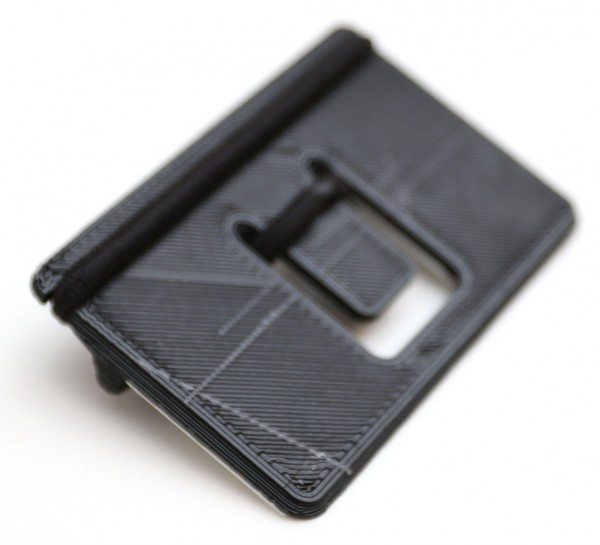
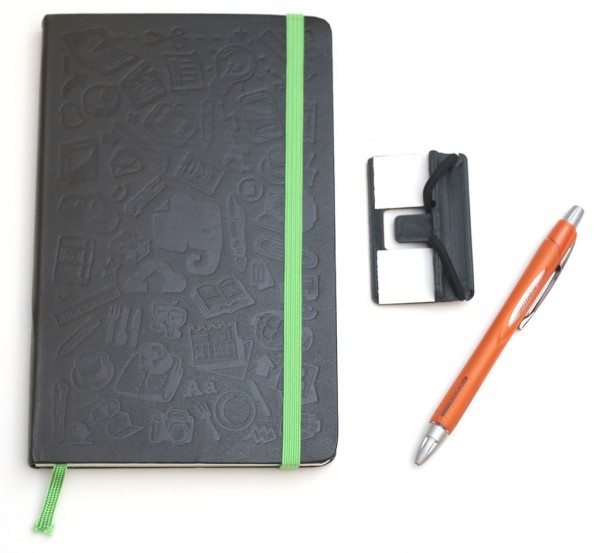
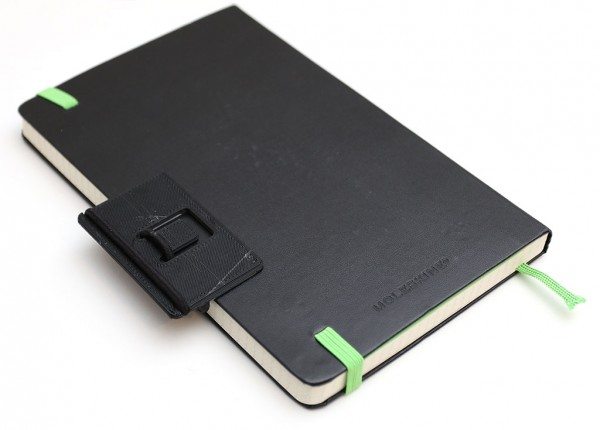
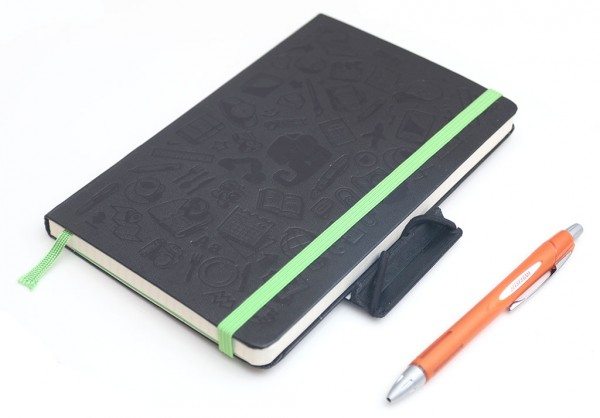
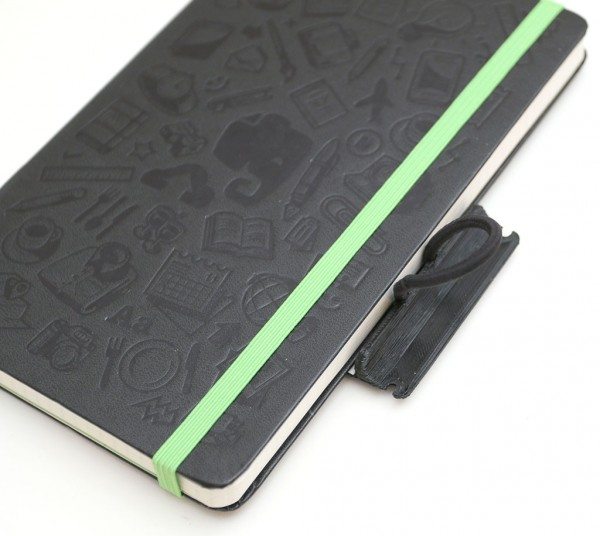
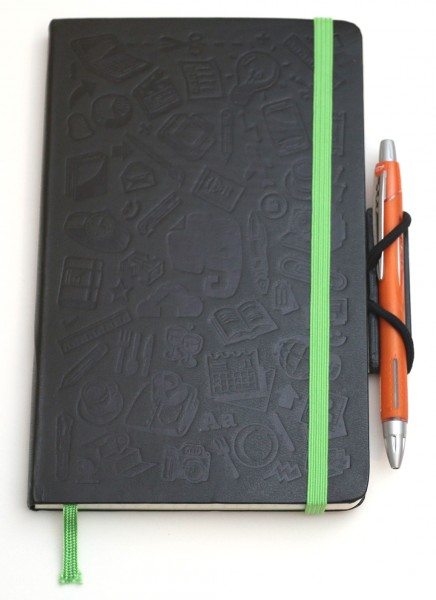
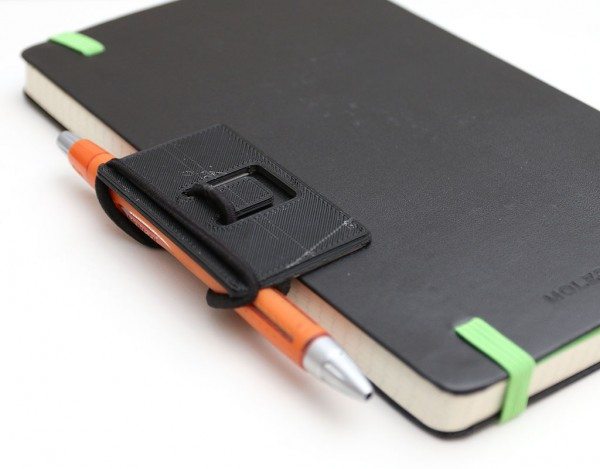


Gadgeteer Comment Policy - Please read before commenting
A light swipe of acetone (nail polish remover) has been said to remove the ‘home printed’ look on a fair amount of the 3-D printed stuff. (It melts the plastic slightly, letting it smooth out and loose the ridges. Use at your own risk – the result is not guaranteed to be smooth either.)